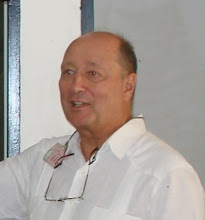HAS, unscathed by the tremblors, accepted over one thousand patients, most of whom were admitted to the hospital and received advanced care, most frequently orthopedic interventions. With time, most of the patients were discharged, some to an uncertain future, and HAS began to return to a semblance of its former status as a regional referral center.
However, the earthquake has changed everything in Haiti. The country’s healthcare infrastructure has been severely disrupted, and leaving a significant shortage in surgical and specialty services in the main city. Almost a million refugees are estimated to have left the capital to stay with relatives or acquaintances in rural areas, and approximately half of them came to the Department of the Artibonite, where HAS is located. Many of the refugees in the Artibonite have located in the major towns, but we estimate that our population in the HAS district has increased by 15%, with many of these residents needing primary health care and immunizations.\
The earthquake has also changed everything at HAS. The hospital, normally a 80-bed facility, now has more than half again as many inpatients. Most of the added inpatients are scheduled for surgery, and many of these are orthopedics cases who have been injured in motorbike accidents. The pediatrics ward has also expanded, with children with gastrointestinal and respiratory diseases, often complicated with malnutrition. As the patient population expands, so do the diagnostic services in the laboratory and radiology.
 The prosthetics services, provided by the Hanger Corporation and Foundation, is racing to keep pace with the demand for new limbs for amputees. Over 400 patients have received prostheses, and more are on the waiting list. Today, there were more than 40 patients at the clinic; some are living at l’Escale, a temporary residential space just off the campus, and the others were brought up from Port au Prince by bus.
The prosthetics services, provided by the Hanger Corporation and Foundation, is racing to keep pace with the demand for new limbs for amputees. Over 400 patients have received prostheses, and more are on the waiting list. Today, there were more than 40 patients at the clinic; some are living at l’Escale, a temporary residential space just off the campus, and the others were brought up from Port au Prince by bus. The malnutrition ward always expands during the rainy season, while crops are growing and there is little food in the house. Almost half of the patients in the ward today are from two mountain communities, and we are making plans to develop nutrition rehabilitation units at these two dispensaries, to be more convenient for the mothers. In the long run, it is our hope to be able to substantially eliminate malnutrition in the mountain region through preventive intervention, especially among the most vulnerable children, those who are going through weaning to a transitional diet, and those who live in resource-poor mountain communities during the rainy season.
Just as more international aid agencies arrive in Haiti to set up long-term recovery projects, there appears to be a sense of malaise and frustration among many young Haitian professionals about the slow pace of change and the lack of a coherent recovery model. HAS, along with other healthcare organizations, has noted the departure of physicians to Canada and Europe, probably on a permanent basis. Several of our all-Haitian permanent staff positions are vacant, and will have to be filled by short-term clinical volunteers.
HAS was very fortunate to have been generously supported in the weeks following the earthquake, and the funds which were sent to assist HAS in that crisis have been expended in addressing the need for resupplying the hospital, accommodating volunteers, Now, the increased demand for our services, and the resource-intensive nature of the surgical and other services, have placed pressures on the planned expense budget for 2010. While cost reductions have been instituted, the redefined mission of HAS represents a challenge for the organization.
We appreciate the concern and support for HAS and for Haiti which our supporters have expressed in so many ways, and we look forward to our new challenges with confidence, and with appreciation.
As we sit together today in Haiti, making plans for the near term and longer term at HAS, we appreciate the concern and support for HAS and for Haiti which have been expressed in so many ways, by so many people. Some have known HAS for a half century, but countless others are new friends. We look forward to our new challenges with confidence, and with appreciation.
Ian Rawson, Managing Director & John Walton, Board Chair






